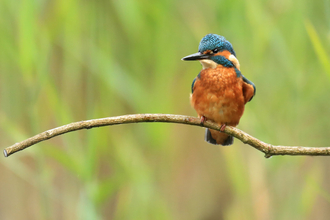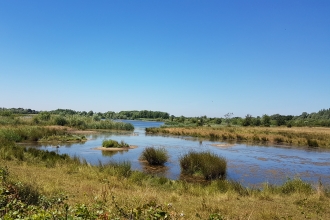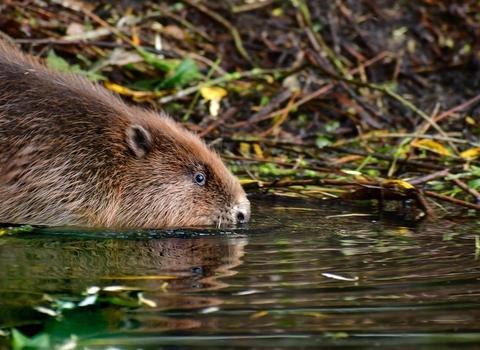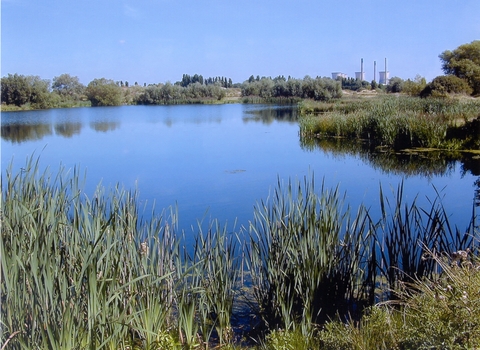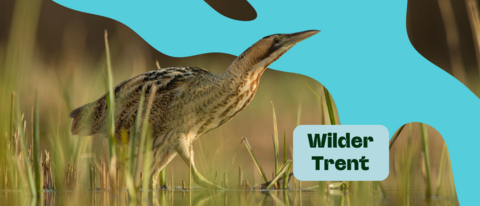
Our Wilder Trent Programme
The Wilder Trent Programme is all about nature-based solutions. By restoring wetlands, re-meandering rivers, and restoring floodplain forests, the ecologically functioning landscape of the future will reduce flood risk for urban areas like Nottingham and Derby while storing water to buffer against drought conditions.
Imagine a landscape where wetlands stretch as far as the eye can see, teeming with life and providing clean water, flood protection and carbon storage. Picture communities connected to nature, enjoying the health and wellbeing benefits of green spaces. This is the future we’re working toward. A healthier, equitable, and more resilient Wilder Trent!
Wilder Trent Vision
Our vision is to restore the river and its floodplains, creating a resilient landscape for people and wildlife. We aim to create 70,000 hectares of connected wetlands in the Trent Valley by 2050. This ambitious plan will reintroduce natural processes, restore habitats, and bring back lost species, creating a resilient ecosystem that benefits both nature and local communities.
Through natural flood management, reforesting landscapes, and implementing other nature based solutions, our long-term programme seeks to tackle flooding, drought, pollution, and climate change while boosting biodiversity and the local economy.
The Trent’s Iconic Past
The River Trent is the third longest river in England and was described by Shakespeare as ‘smug and silver’. To some, it’s an important historical navigation route, a connection from England to the continent for trade, where goods such as wool, salt, coal, and pottery flowed. For others that navigation route was also the lifeblood of the community, an icon of the Midlands and was once rich in nature, supporting huge numbers of migratory fish species such as sturgeon and salmon. Stretching from its source in Staffordshire to the Humber Estuary, the Trent flows through the heart of the Midlands, linking a network of tributaries that connect major cities such as Birmingham, Derby, Leicester and Nottingham.
Bringing Back Lost Species
One of the most exciting aspects of the Wilder Trent Programme is the opportunity to reintroduce keystone species that once shaped the region’s ecosystems. Beavers- nature’s ecosystem engineers - are already shaping landscape from within their fenced enclosures at Willington Wetlands in Derbyshire and Idle Valley in Nottinghamshire. Their return as wild-free living species is possible, and these industrious mammals will shape wetlands that alleviate flooding, store water during droughts, and improve water quality by filtering out sediment and pollutants.
But the vision doesn’t stop with beavers. We’re also exploring the potential for elk to return to this landscape. Elk are a charismatic large herbivore that has been absent from England for thousands of years. They play a vital role in wetland ecosystems - grazing floodplains and helping create diverse habitats that support a wide range of species. With support from Rewilding Britian, we’re exploring bringing elk back into two existing beaver enclosures. The elk enclosures could be the catalyst to engage people in the creation of a connected corridor of wetlands – habitat that elk will need if they are to be return to the wild in the future. In turn, keystone species like elk and beavers play a crucial role in restoring these floodplain wetlands into thriving, self-sustaining ecosystems.
Another species set to make a triumphant return is the white stork. These elegant birds, once native to Britain, are perfectly suited to the Trent Valley’s wetlands. Storks are not only ecological ambassadors but also cultural icons, capable of inspiring communities and driving ecotourism. Their presence will amplify wetland restoration efforts, creating a ripple effect of benefits for nature and people.
People and the River
Wetlands act as natural sponges, holding water during heavy rains and releasing it slowly during dry periods. They also sequester carbon, helping to combat climate change. Restoring natural floodplains and creating treatment wetlands will filter out pollutants, improve aquatic habitats, and support species like salmon and eels. These efforts will also have knock-on benefits for estuaries and coastal ecosystems, ensuring cleaner water flows into the North Sea.
Wetlands aren’t just great for wildlife, they’re great for people too. We all need nature in our lives, and we benefit from what nature gives us.
Access to nature is powerful for improving physical and mental health, yet many communities along the Trent lack opportunities to connect with the natural world. We aim to change this by improving access to rivers for walking, cycling, and water-based activities, where safe for wildlife and people, like canoeing.
Ecotourism will play a vital role in funding these efforts. By creating a Trent-wide tourism economy, the programme will generate sustainable income for landowners and boost local businesses. Visitors will be drawn to the region’s rewilded landscapes, where they can witness beavers building dams, elk grazing floodplains, and storks soaring overhead.
Wilder Trent News & Updates
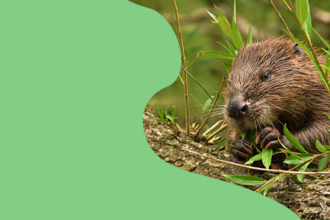
Four Beavers, Eight Kits, One Incredible Wetland Habitat - Celebrating Four Years of Beavers Back in Derbyshire
This week marks four years since beavers were reintroduced at Derbyshire Wildlife Trust’s Willington Wetlands Nature Reserve, 800 years…
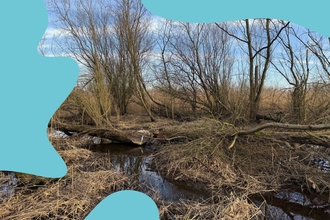
Huge project to map England’s longest river will inspire new vision for all
Derbyshire Wildlife Trust is partnering with The Wildlife Trusts and RSA Insurance, an Intact company, on a new 18-month project to map…
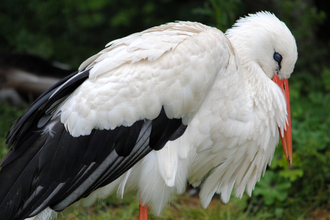
From Folklore to Floodplains: The Case for Storks in the Midlands
White storks, once common across the UK, have been absent from the Midlands for over 600 years. As key players in healthy wetland…






